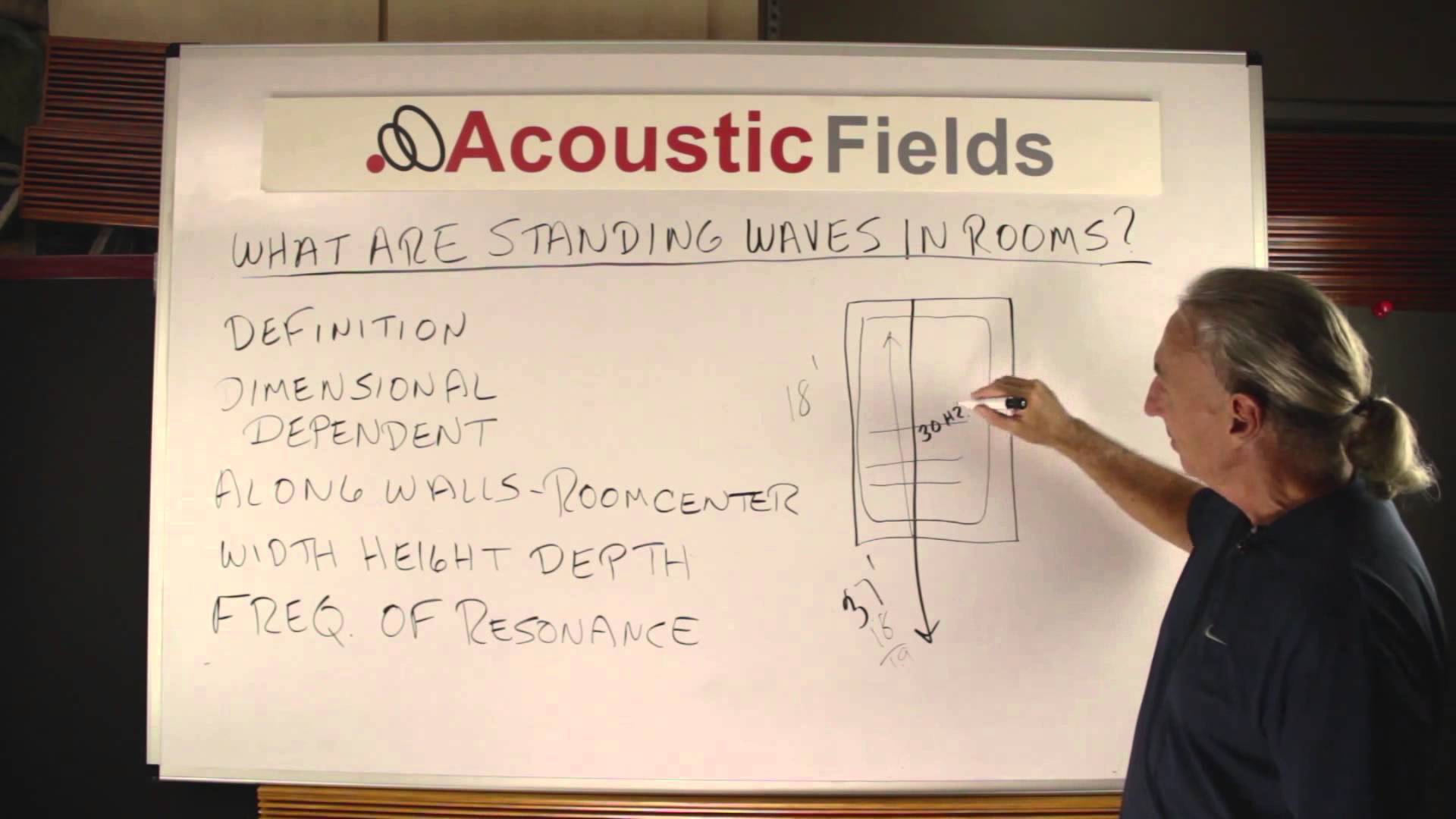Today we’re going to talk about what are standing waves in rooms. We get a lot of customers asking us what are standing waves and the easiest answers is a wave that stands around. Well that’s not really a good definition when it comes to acoustics.
So what is a standing wave?
It’s called a standing wave because its really not standing but its in a position in your room, it’s a pressure area and is the result of low frequency energy not fitting in your room.
Let’s tak an example. If we have a room that’s 18ft long and we want to put a 30 Hz wave into that room, well how long is a 30 Hz. wave? Well we know its 37 feet approximately. But we have an 18 foot room. How does a 37 foot wave fit in an 18 foot room? It doesn’t.
So the excess energy, if you subtract 18 foot from 37, and you get 19 feet, where does it go? Well some of it goes back into the room, its reflected, some goes out the room and some stays at the boundary surface and accumulates and that’s where you get standing waves.
Think of a standing wave as the loud guy at the bar.
The guy who’s really been drinking too much and he’s really loud and the volume of his voice stands out amongst everyone else, that’s a standing wave. That’s an area of high pressure within the room that’s louder than the average people in the room speaking. So it’s an area of pressure that we don’t want.
The pressure areas are usually along our boundary surfaces but we also have pressure areas throughout the room itself. The disadvantage of that is that if your listening or speaker positions are in one of those pressure areas then you have speaker position and pressure or listening position and pressure. That’s not what you want. You don’t want any pressure reflected in your listening or speaker position.
So a standing wave is an area of pressure, often found in the room center, it has a width, height and a depth to it and it also has a frequency of resonance. So the 30 Hz. wave that we used as our example will create energy pressure areas within the room that are fundamentals, with a fundamental of 30 and a harmonic on top. So they’re very powerful. So depending on the dimension and volume of the room they can be plus 10, plus 15, plus 20 DB in some situations.
In summary what are standing waves in rooms?
They are high pressure areas, low pressure areas, pressure areas where low frequency energy will simply not fit and it expresses its discomfort, if you will, with the dimensions it has to fit in by creating resonances.
So I hope that helps you. If you have any questions at any time I am always on hand to help answer them. Leave them in the comments section or email me at info@acousticfields.com. If you would like to learn more about room acoustics please sign up for my free videos and ebook by joining the mailing list here. I send room tuning tips and things for you to test in your room every Wednesday. They are easy to follow and really help you enjoy more of your music. And if you would like your room acoustic issues analysed for free by me then please fill in the form here and I will be happy to take a look for you.
Thanks and speak soon
Dennis







